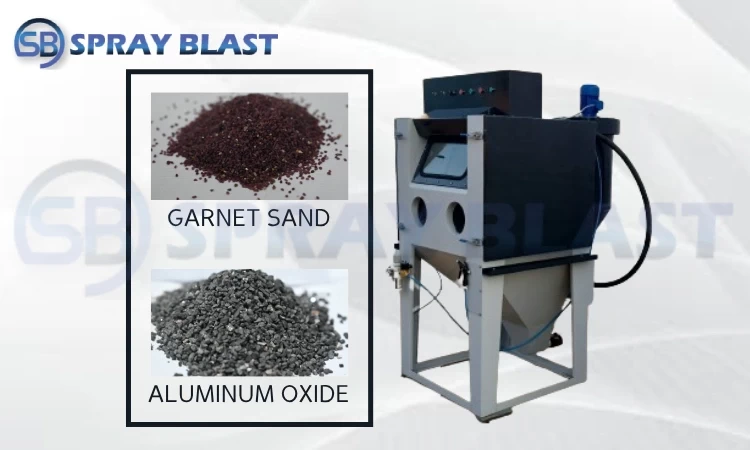Abrasive Sand blasting comes in a variety of forms, including Aluminum oxide, silicon dioxide, soda, steel grit, Garnet, glass bead, Walnut shells, and many others. All of these different abrasive blasting processes often employ a certain type of grit to produce the desired effects, necessitating the need to choose the best approach to apply. For example, if you want to remove old paint from your car before repainting it, consider employing beads abrasive blasting.
Sand Blasting Media
The term "sandblasting" is actually a bit misleading because sand is not always the material used in the blasting process. There are a variety of materials that can be used in sand blasting machine, depending on the specific application and the desired results. Some common materials used in sandblasting include:
- Sand: This is the traditional abrasive media used in sandblasting, but it is becoming less popular due to health and environmental concerns associated with inhaling and disposing of silica dust.
- Aluminum oxide: a hard, angular material that is often used for cleaning and etching metal surfaces.
- Glass beads: tiny, spherical beads made from glass that is used for cleaning and deburring.
- Garnet: a natural mineral that is often used for cleaning and preparing surfaces for painting or coating.
- Steel grit: small, angular particles made from hardened steel that is often used for cleaning and preparing metal surfaces.
- Walnut shells: ground-up walnut shells are sometimes used in sandblasting to clean delicate surfaces, such as wood or plastic.
- Plastic media: spherical plastic particles that are used for cleaning and deburring surfaces.
For More info about sand blasting safety equipment visits our Website.
Abrasive Media for Sand Blasting
Choosing the right abrasive media for sandblasting depends on several factors, including the type of surface being blasted, the level of surface preparation required, and the desired surface finish. Here are some general guidelines to help you choose the right abrasive media for your sandblasting application:
- Surface material: The type of material being blasted will affect the choice of abrasive media. For example, harder abrasive media like steel grit or aluminum oxide are often used on metal surfaces, while softer abrasives like walnut shells or plastic abrasive media are better suited for delicate surfaces like wood or plastic.
- Surface preparation: The level of surface preparation required will also influence the choice of abrasive media. For heavy-duty surface preparation, such as removing thick coatings or rust, a more aggressive abrasive like steel grit or aluminum oxide may be required. For lighter surface preparation, such as removing light rust or preparing a surface for paint, a softer abrasive like glass beads may be sufficient.
- Desired surface finish: The desired surface finish is another important factor to consider when choosing abrasive media. If you want a smooth, polished finish, a fine abrasive like glass beads may be appropriate. If you want a rough, textured finish, a coarser abrasive like steel grit may be more suitable.
- Environmental concerns: It's also important to consider the environmental impact of your abrasive media.
For more information about Thermal spray wire visits our website.
By considering these factors and selecting the appropriate abrasive media for sand blasting application, you can achieve the desired surface finish while minimizing the risk of damage to the substrate being blasted. In general, the choice of abrasive media used in sand blasting will depend on the specific application and the desired results. It's important to use the appropriate material to avoid damaging the surface being treated or causing harm to the people performing the task.
